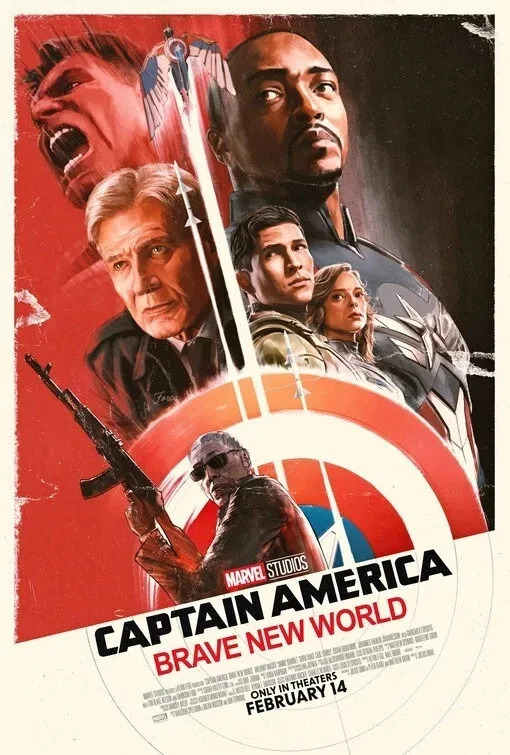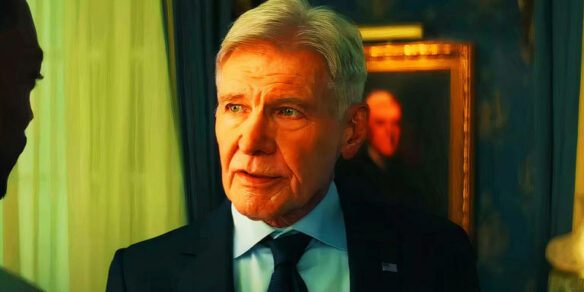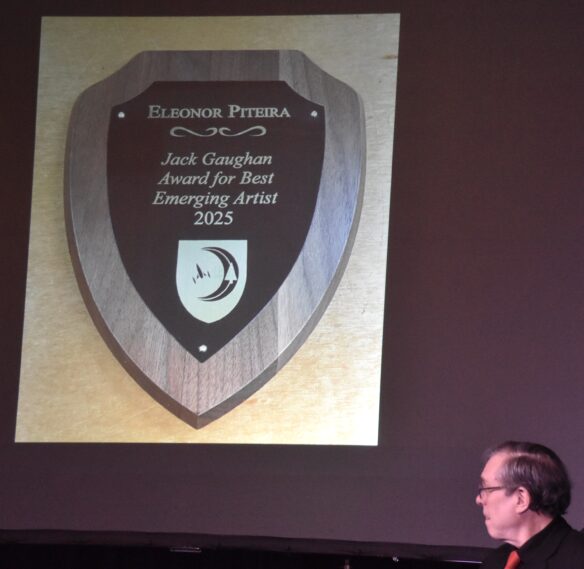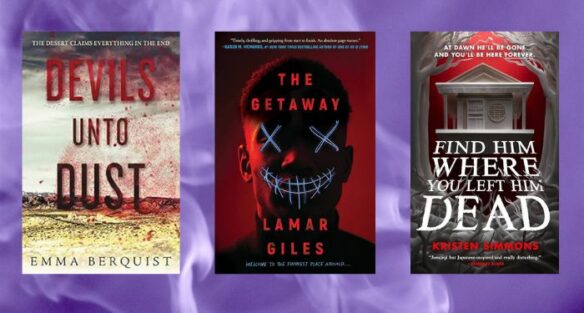
CAPTAIN AMERICA: BRAVE NEW WORLD, A (SOMEWHAT SPOILERY) REVIEW
By Chris M. Barkley:
Captain America: New World Order (***1/2, 118 minutes) with Anthony Mackie, Danny Ramirez, Carl Lumby, Liv Tyler, Shira Haas, Giancarlo Esposito, Xosha Roquemore, Tim Blake Nelson and Harrison Ford. Screenplay by Rob Edwards, Malcolm Spellman, Dalan Musson, Peter Glanz and Julius Ohna, Directed by Juluis Onah.
Bechdel Test: Fail.
Captain America: Brave New World, is the thirty-fifth (!) installment of the Marvel Cinematic Universe and the first of three releases this year, the others being Thunderbolts* (in May) and The Fantastic Four (its working title at the moment: “First Steps”) in July.
If you are a fan of the MCU, there is nothing I can say (or write) that will deter you from seeing this film.
And I will say, as a fan myself, I wholeheartedly support you spending your precious time and hard earned cash seeing Captain America: Brave New World because I enjoyed the hell out of it and look forward to seeing it in a theater again, and soon.
But, some naysayers will inevitably ask, what about the onset of ‘superhero fatigue’? Aren’t there ENOUGH comic book influenced films and TV shows already? When will the faucet twist shut on bing-bam-boom special effects laden epics?
And I readily acknowledge that I’ve had those feelings myself in the past few years. In fact, after reading that there were MCU films planned up to the year 2032 (!) I was hoping that Marvel CEO Kevin Feige was actively thinking about how this particular saga will end before the market for superhero films bottoms out like westerns and film noirs did at one point in the previous century.
But, let’s face it, this genre of films will last as long as they make money and captivate the audience they were intended for.
As I am writing this review, I looked at how much money the MCU has grossed since Iron Man debuted in 2008.
After the release of Deadpool and Wolverine last year, the total stands in excess of over 31 BILLION dollars.
As of Saturday evening as I write this review, Captain America: Brave New World is projected to earn 87-90 million dollars in its initial four day run.
So the answer, at least at the moment, is that Marvel/Disney will be producing these films for the foreseeable future.
This begs the question, is CA: Brave New World a good film?
The answer is no, it is not a good film.
It is a nearly GREAT film with a caveat, which I will explain towards the end of this review.
Why is it a great film?
Because to those of us who have watched the previous thirty-four films know, like those who regularly follow shows like Bridgerton, The Traitors, NCIS (any variant) The Bear, Yellowstone, Abbott Elementary, Ric & Morty, etc, are heavily invested in the disposition and well being of imaginary characters. And furthermore, we want to know how they will react to or endure as twisty plots and various situations are constantly thrown at them.
And, speaking for myself, Brave New World is a surprisingly effective paranoid political thriller (and strongly in the vein of a previous entry, 2014’s Captain America: The Winter Soldier) that stepped on the gas from the start and had me pinned back to my theater seat for nearly two hours…
When we last saw Sam Wilson (Anthony Mackie) at the end of the 2021 Marvel mini-series The Falcon and the Winter Soldier, he had just come to terms in accepting the iconic role of Captain America from his predecessor, Steve Rogers (Chris Evans).
This newest film from the Marvel Cinematic Universe finds Sam begrudgingly accepted as the new Captain America by the new president of the United States, Thaddeus “Thunderbolt” Ross (Harrison Ford, reprising a role originated by the late William Hurt).
Fresh off an successful mission against an international terrorist group called the Serpent Society, Sam, accompanied by his partner Joaquin “Falcon” Torres (Danny Ramirez) and his mentor, ex-super soldier Isaiah Bradley (Carl Lumby) are invited to the White House reception that will announce an initiative to share in a new metal, adamantium, and wealth of knowledge found in the Celestial Tiamat, an alien artifact whose origins was recounted in the 2021 Marvel film, The Eternals.

President Thaddeus Ross (Harrison Ford), the initiator of the treaty, also had an ulterior motive in having Sam present; he wants Sam to form a new group of Avengers to replace the recently disbanded group in an apparent attempt to protect America (mainly, it seems) from all enemies, foreign, domestic, and especially extraterrestrial. Naturally Sam is skeptical of Ross since he was one of the driving proponents of the Sokovia Accords, which regulated superhero activities to strict oversight by the United Nations or individual governments.
But Sam and Joaquin’s problems really begin when Bradley and three other members of the audience suddenly open fire on the assembled dignitaries and almost assassinate Ross and other world leaders. Ross’ security team, headed up by Secret Service agent Leila Taylor (Xosha Roquemore) and Ruth Bat-Seraph (Shira Haas), take Bradley and the others into custody and Ross pointedly warns Sam and Joaquin not to interfere with the investigation.
And since this is a Marvel movie, you know and I know this advice goes unheeded.
What they find is a nefarious web of deceit and treachery spearheaded by the head of the Serpent Society, Seth Voelker/Sidewinder (a deliciously relentless Giancarlo Esposito) and the mastermind who’s behind the carefully calculated plan of death and destruction, Samuel Sterns (an icy performance by Tim Blake Nelson), a diabolical biochemist who hasn’t been seen since the second MCU entry, The Incredible Hulk.
Critics have been giving Brave New World mixed reviews and, as a very biased observer, it’s easy to see why. Those negative reviews probably stem from the aforementioned “superhero fatigue” and seeing this effort as a “paint by numbers” affair.
When a film has five credited screenwriters (and three writers on story credit to boot), that’s usually a sign that it has too many creative cooks, notes from the producers and differing opinions on how the production is being executed.
And while I have heard there were rumors that Brave New World had a troubled production, I was very highly satisfied with Juluis Onah’s direction, the casting and acting, visual effects, sound and editing. When you notice flaws in those areas in the course of watching, you know you’re seeing a bad movie. As far as I’m concerned, that was not the case here.
What these critics fail to see is that these films have a very deep, interconnective history that fans, such as myself, deeply appreciate. They think that trying to remember what happened in a certain instance five films ago paying off a current film years later as either confusing or, referred derisively as “homework”. Clearly, they are not the target audience for these movies.
For instance, the Thaddeus Ross we see here is not the same character we last saw in Black Widow. (And I don’t mean him just losing the mustache for the role change). He’s been estranged from his daughter, Betty (Liv Tyler) and it shows, vividly. In previous appearances, Ross seems vulgar, abrupt, arrogant and very single minded in his pursuit and treatment of her ex-boyfriend, Bruce Banner.

But here, as Harrison Ford, interprets Thaddeus Ross, he is clearly pining for the company and love of his daughter. And although all of these detrimental bad traits do show up during the course of the story, he’s clearly regretting some of his past actions and is trying to mitigate some of that by doing something uncharacteristic for him, trying to arrange a peaceful resolution to the international crisis the appearance of the Celestial Tiamat has caused. It’s really a fine thing to see an actor of Ford’s calibre struggling to balance his sorrow and anxieties while trying to mask those feelings, and his own secrets, while also trying to be tough and altruistic in equal measure. We’ll never know if the late William Hurt could have pulled off this role but Harrison Ford does, in spades.
Sam, too, has lingering doubts; the self doubt about whether or not he can keep those he cares about safe and his ability to grow into the incredibly daunting and symbolic role of Captain America, to be enough, for others and himself.
If Brave New World has a flaw, it’s a pretty glaring one; once again, the primary women characters, specifically Ruth and Leila, are part of the action, but do not directly interact with each other in any meaningful way. If I could convey anything to Kevin Feige and the creative teams at Marvel putting together these movies is that it‘s not enough merely to show diversity and inclusion, it would be better if they ALL pass the Bechdel Test on an ongoing basis from here on in. (Because it cost Brave New World half a star in this review.)
In the end, if the box office receipts of this offering from Marvel Studios do not match the stratospheric heights of some of the previous entries in the Marvel Cinematic Universe, future movies have been planned and scheduled for release.
And if movies start failing on a regular basis, Kevin Feige had better have a very clever exit strategy in place.
Will Captain America: Brave New World be the canary in the coal mine for the Marvel Cinematic Universe and superhero films in general?
Only time will tell. But I hope not.
Because if the single teaser at the very end of the credits is a grim foreboding of the future events, I DEFINITELY want to see what happens next!
I hope you do, too.


























